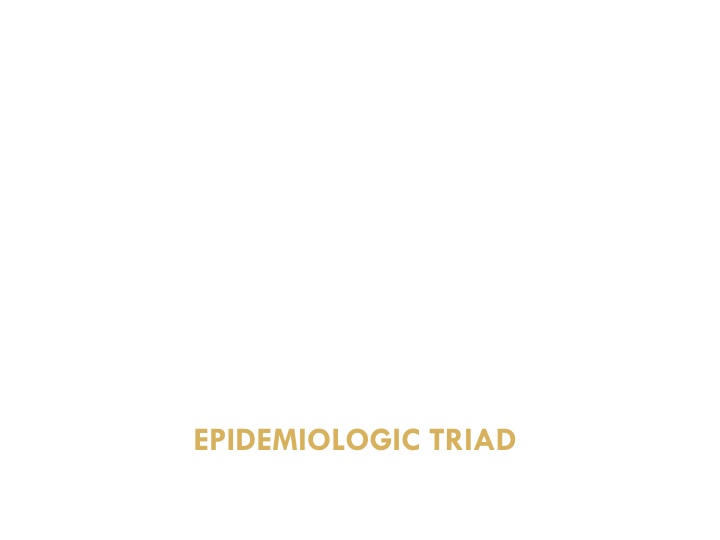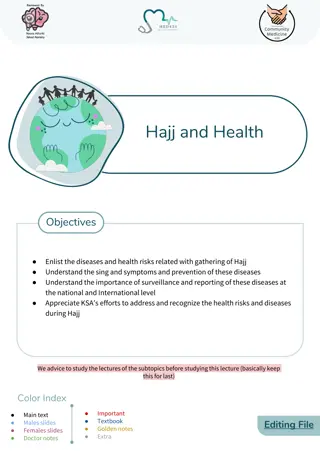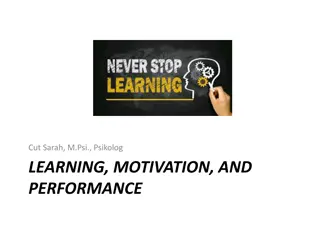
Understanding the Epidemiologic Triad and Disease Development Theories
Explore the Epidemiologic Triad, theories on disease development, and the iceberg phenomenon. Learn about primitive and modern disease theories, including the germ theory. Gain insights into the factors influencing disease occurrence and prevention through causal models and the broadening concept of agents.
Download Presentation

Please find below an Image/Link to download the presentation.
The content on the website is provided AS IS for your information and personal use only. It may not be sold, licensed, or shared on other websites without obtaining consent from the author. If you encounter any issues during the download, it is possible that the publisher has removed the file from their server.
You are allowed to download the files provided on this website for personal or commercial use, subject to the condition that they are used lawfully. All files are the property of their respective owners.
The content on the website is provided AS IS for your information and personal use only. It may not be sold, licensed, or shared on other websites without obtaining consent from the author.
E N D
Presentation Transcript
LEARNING OBJECTIVES Describe four theories postulated for the development of diseases Explain the concept of iceberg phenomenon of diseases
DEVELOPMENT OF DISEASES ? DISEASE
REASON OF STUDYING CAUSAL MODEL Studying how different factors can lead to ill health Generate knowledge Disease prevention and control
PRIMITIVE AND MIDDLE AGE THEORIES Supernatural cause Evil spirits Punishment Gods Contagion theory Contact with the sick Miasma Bad air/poisonous
GERM THEORY + = DISEASE
EPIDEMIOLOGIC TRIAD Micro-organisms, chemicals and physical factors
EPIDEMIOLOGIC TRIAD Environment Agent Host Extrinsic factors (physical/social environment) Necessary/not enough Intrinsic factors Number Virulence Resistance Age Sex Ethnicity SES Life style Nutrition status Hygiene Urbanization Climate/rainfall Altitude Overcrowding Bad ventilation Indoor air pollution Health services
EXAMPLE: EPIDEMIOLOGIC TRIAD Extrinsic factors Intrinsic factors Necessary/not enough What are the factors that determine the occurrence of pulmonary tuberculosis?
EPIDEMIOLOGIC TRIAD: BROADENING THE CONCENPT OF AGENT Broadening the categories Environment Agent Host Extrinsic factors (physical/social environment) Necessary/not enough Intrinsic factors Micro-organisms Chemical: poisons, tobacco, drugs Physical: Radiation, temperature Allergens: Food and air Age Sex Ethnicity SES Life style Nutrition status Hygiene Urbanization Climate/rainfall Altitude Overcrowding Bad ventilation Indoor air pollution Health services
EPIDEMIOLOGIC TRIAD: BROADENING THE CONCENPT OF AGENT Broadening the categories Environment Agent Host Extrinsic factors (physical/social environment) Necessary/not enough Intrinsic factors Chemical contaminants: l-tryptophan contaminant causing eosinophilia-myalgia syndrome Physical forces: Repetitive mechanical forces associated with carpal tunnel syndrome Model limitation: Dos not work well for some noninfectious diseases as it is not always clear whether a particular factor should be classified as an agent or as an environmental factor
WEB CAUSATION Web causation model de-emphasize the role of the agent
WEB CAUSATION: CORONARY HEART DISEASES Web causation model de-emphasize the role of the agent
EPIDEMIOLOGIC WHEEL Life style & living conditions Organisms & disease vector Climate, seasonality & climate
EPIDEMIOLOGIC WHEEL POSTULATED MODEL DIABETES MELLITUS
EPIDEMIOLOGIC WHEEL PHENYLKETONURIA MALARIA
ICEBERG PHENOMENON Severity Only severe incidents are identified Reported cases Incidence Un-reported incidents Prevalence pool
REFERENCES Principles of Epidemiology in Public Health Practice. Third Edition. An Introduction to Applied Epidemiology and Biostatistics. Centers for Disease Control and Prevention (CDC) Gordis L. Epidemiology. 2009






















